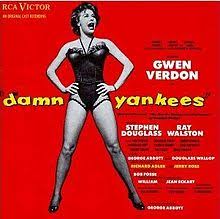- David Armstrong

- Sep 10, 2019
- 2 min read
As research for my University of Washington School of Drama course THE BROADWAY MUSICAL – HOW IMMIGRANTS, JEWS, QUEERS, AND AFRICAN-AMERICANS INVENTED AMERICA’S SIGNATURE ART-FORM, I compiled a list of the 350 most significant and influential writers, composers, directors, choreographers, and producers throughout the Broadway Musical’s 120ish year history.
I find it stunning to note that only 36 of the individuals on this list can be classified as straight, WASP males. That is barely over 10%. The other 90% were Immigrants, Jews, Queers, African-Americans, and Women -- and many are members of more than one of those disenfranchised groups. This demonstrates that the American Musical is truly, and overwhelmingly, an outcast art form. Marginalized people created, and still sustain the Broadway Musical, even as it has been a centerpiece of mainstream American culture for more than a century.
What these marginalized people created was something totally new. A popular, democratic kind of music-theater that -- like most great American inventions -- was inspired by both a strong desire to express oneself, and a strong necessity to put food on the table. The concept of “the melting pot” has lost favor with some historians, but it remains a very apt description of how various multi-cultural artistic traditions blended together to create the American musical.
The Broadway Musical is often seen as one of the most middle-of-the-road, middle-class, and middlebrow of art forms. However, I would suggest that these observers have failed to see beneath the musical’s slick, polished and very entertaining surface. Underneath, musicals are actually very subversive.
When I tell people that the principal subject matter of the Broadway musical – its most common central theme – is racial prejudice and social justice, they are often surprised and skeptical. However, there is no doubt that this is the case. I can count 37 hit musicals with issues of race at the center of their story. This is clearly because the creators of the musical have almost always been from disenfranchised groups themselves.
Did Leonard Bernstein, Stephen Sondheim and Jerome Robbins, the three great Jewish and queer creators of West Side Story wake up one day and say “we’re gay and Jewish, and we feel oppressed so we are going to write a musical that will be a metaphor for the prejudice and alienation we experience in this society?” Of course, not. But when they decided to create a contemporary retelling of Romeo And Juliet they could not help but bring their thoughts, their feelings, their emotions, their life experience, and their humanity to the work. That is what great writers, directors and choreographers do. Their story of rival gangs and cultures inspired them to write a song about a love that “dare not speak its name” whose lyric begins:
“There’s a place for us
Somewhere a place for us
Peace and quiet and open air
wait for us somewhere.”
This song transcends the specific situation of the show and echoes the desire of everyone who to yearns to live fully and openly within their society. That is what musicals do.















































